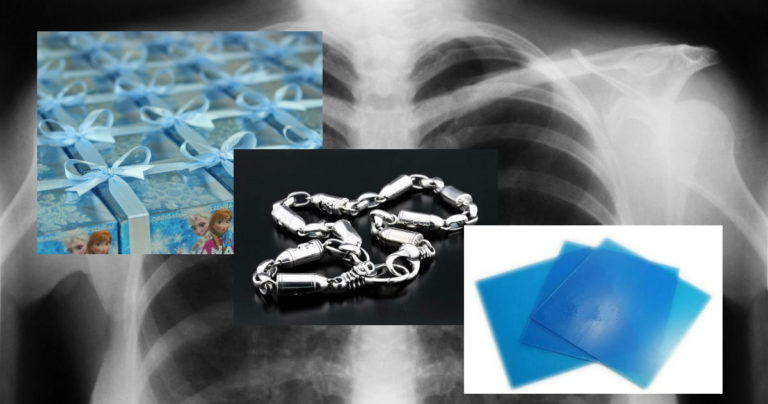Advertisements
The management and recycling of hospital waste is an essential issue to ensure both public health safety and environmental preservation. Hospitals generate a significant amount of waste, which, when poorly managed, can cause serious contamination and pollution problems. In this article, we will discuss the different types of hospital waste, the challenges associated with its management, and the best practices for treating and recycling this material efficiently, with a focus on recycling of hospital waste.

What is Hospital Waste?
Hospital waste is generated by the activities of healthcare institutions such as hospitals, clinics and laboratories. It includes a wide range of materials, such as used syringes, infectious materials, hazardous chemicals and general waste. Classifying this waste is essential to ensure its proper treatment, minimizing risks to public health and the environment.
According to current legislation, hospital waste is classified into three main categories:
- Infectious Waste (Class A): These wastes present a risk of biological contamination, such as blood, human tissues and used syringes.
- Hazardous Waste (Class B): These include materials containing chemical substances, such as expired medicines and radioactive materials used in cancer treatments.
- Common Waste (Class C): Similar to household waste, they can be divided into recyclable and organic materials.
The Importance of Recycling Hospital Waste
A recycling of hospital waste is an essential activity to reduce the environmental impact and operational costs of healthcare institutions. In addition to minimizing the amount of waste sent to landfills, recycling also helps preserve natural resources and reduce the need for hazardous materials treatment.
Improper management of hospital waste can generate numerous problems, such as soil and water contamination, worker exposure and increased disposal costs. Therefore, it is necessary to implement a rigorous management plan for these materials, from separation to transportation and final treatment.
Types of Hospital Waste and How to Treat It
Infectious Waste (Class A)
You infectious waste are those that pose a significant risk to public health because they contain biological agents capable of causing infections. Examples include blood, excretions, secretions and laboratory waste. This type of waste requires specialized treatment, such as incineration or sterilization, before being discarded.
Correct management of this waste includes:
- Proper separation into resistant and suitable bags and containers for biological waste.
- Careful transport to specialized treatment units.
- Treatment in autoclaves or incinerators to neutralize any biological risk.
Hazardous Waste (Class B)
You hazardous waste are composed of materials that contain chemical or radioactive substances. This waste can cause harm to the environment and human health if disposed of improperly. These include expired medicines, chemotherapy products and radioactive materials.
The treatment of this type of waste requires extra care:
- Storage in special, labeled containers.
- Neutralization processes or safe disposal in authorized treatment facilities.
- Separation and transportation in accordance with safety standards established by regulatory bodies.
Common Waste (Class C)
You common waste, or Class C, are similar to household waste, including recyclable and organic materials. These wastes can be treated in a similar way to common urban waste, with some being sent for recycling and some to landfills.
Hospitals and clinics must implement recycling programs, encouraging the separation of recyclable materials such as paper, plastic and glass, in addition to ensuring the proper treatment of organic waste.
Standards and Regulations for the Management of Hospital Waste
The management of hospital waste is regulated by health and environmental agencies, such as the National Environmental Council (CONAMA) and the National Health Surveillance Agency (ANVISA). These agencies establish strict guidelines for the management, transportation and final disposal of waste generated by health institutions.
According to Federal Law No. 237, hospitals and clinics are required to present a health waste management plan (PGRSS). This plan must include:
- Employee training for the correct separation of waste.
- Adequate infrastructure for the temporary storage of hazardous materials.
- Environmental licensing to ensure that institutions follow waste treatment and disposal standards.
Institutions that fail to comply with these standards are subject to fines and other penalties. Therefore, it is essential that hospitals and clinics comply with regulations to avoid risks to public health and the environment.
Benefits of Recycling Hospital Waste
Invest in recycling of hospital waste brings several benefits, both economic and environmental. Some of the main benefits include:
- Cost Reduction: Recycling can significantly reduce waste disposal costs, as less material will be sent to landfills or incinerators.
- Sustainability: Recycling helps reduce the consumption of natural resources and the emission of polluting gases, contributing to environmental sustainability.
- Security: Proper treatment of hazardous waste reduces the risk of contamination and exposure to employees, patients and the community in general.
- Compliance with Standards: By following legal guidelines, institutions avoid fines and other legal sanctions.
How to Implement a Medical Waste Recycling Program
So that the recycling of hospital waste To be effective, it is essential that healthcare institutions implement a structured and ongoing waste management program. Here are some key steps:
- Education and Training: All employees must be trained to recognize and properly separate different types of medical waste. This includes the correct use of bags and containers, as well as safe practices when handling hazardous waste.
- Cooperation with Recycling Companies: Partnerships with companies specialized in recycling hospital waste can optimize the process and ensure that treatment is carried out in accordance with current regulations.
- Continuous Monitoring: The waste management plan must be constantly monitored and adjusted as necessary to ensure efficiency and compliance with regulations.
The Importance of Efficient Management of Hospital Waste
Proper management of waste is vital to ensure people's safety and the preservation of the environment. The waste recycling should be seen as a priority, not only to reduce environmental impact, but also to optimize the resources of health institutions.
With a proper management plan, hospitals and clinics can recycle efficiently, protecting public health and avoiding fines for non-compliance with regulations. In short, the correct recycling of hospital waste It is essential to ensure the sustainability and proper functioning of healthcare institutions, in addition to contributing to a cleaner and safer world for everyone.
Check out other interesting facts about recycling clicking here.
Learn how to make art by recycling, Click here.
Summary




We are faced with medical waste disposal areas in shopping malls. I have a question. We always leave a drain in the area for cleaning with water. Can this drain be connected to the shopping mall's sewage system and discharged into the public sewer system? If not, what is the correct procedure? Thank you.
ANVISA technical note on hospital sewage: http://www.mma.gov.br/port/conama/processos/EFABF603/NotaTecnica_3aReuniSubGTServSaude.pdf
I think it clears up your doubts about it.
Thank you for your collaboration, Thais
Under no circumstances should the waste coming from the drain be used, which is called “waste” because it contains contaminants from the hospital treatment area, not forgetting that contact with such elements can lead to infection.
From everything to more and more to the environment.
A hydraulic scheme that allows the emptying of the “hospital” sector – in quotation marks because it is inside a shopping mall – must specifically serve this sector.
Considering this sector, I do not believe that there is anything wrong with the dirt in the drain where the water from the environment is drained, but I do not believe that it should be disposed of in the same drain. By checking for toxic products in such water, which can be done by a laboratory, it is possible to know what treatment is necessary to dispose of it.
As much as necessary.
If, in such laboratory examination, there are no toxic derivatives in the environment exposed to the drain, it should continue to operate as it is. If it is necessary to treat the water before discharging it, the company should adopt this procedure.